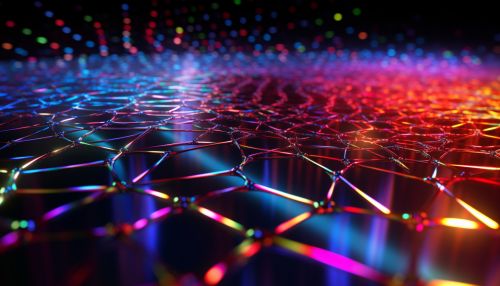Quantum Computing with Silicon Quantum Dots
Introduction
Quantum computing is a rapidly evolving field that leverages the principles of quantum mechanics to process information. A significant area of research within this field is the use of silicon quantum dots as a medium for quantum computation. This article delves into the intricacies of quantum computing with silicon quantum dots, exploring the underlying principles, the current state of research, and the potential applications and challenges in this field.


Quantum Computing: A Primer
Quantum computing diverges from classical computing by utilizing quantum bits, or qubits, as the fundamental unit of information. Unlike classical bits, which can exist in a state of either 0 or 1, qubits can exist in a superposition of states, allowing them to represent 0 and 1 simultaneously. This property, along with entanglement and quantum interference, allows quantum computers to perform complex calculations at a speed unattainable by classical computers.
Silicon Quantum Dots: The Basics
Silicon quantum dots are nanoscale structures made of silicon, with dimensions small enough to exhibit quantum mechanical properties. These properties make them a promising candidate for the physical realization of qubits. The quantum confinement effect in these dots allows for the manipulation of electron states, which can be used to encode and process quantum information.
Quantum Computing with Silicon Quantum Dots
Fabrication and Control
The fabrication of silicon quantum dots for quantum computing involves intricate processes such as lithography and etching. The dots are typically embedded in a silicon matrix, with the size, shape, and arrangement of the dots being critical factors that influence their quantum behavior. The control of qubits in silicon quantum dots is achieved through the application of electric and magnetic fields, which can manipulate the spin and charge states of the electrons within the dots.
Quantum Gates and Algorithms
In quantum computing, operations on qubits are performed by quantum gates, analogous to the logic gates in classical computing. These gates manipulate the state of qubits, enabling the execution of quantum algorithms. Several quantum algorithms, such as Shor's algorithm and Grover's algorithm, have been proposed, which highlight the potential of quantum computing in tasks such as factorization and search.
Current Research and Developments
Research in quantum computing with silicon quantum dots is a dynamic field, with several research groups and companies actively pursuing advancements. Recent developments include the demonstration of two-qubit logic gates and the development of techniques for long coherence times. These advancements are critical steps towards the realization of a scalable silicon-based quantum computer.
Challenges and Future Directions
Despite the promising developments, several challenges remain in the field of quantum computing with silicon quantum dots. These include issues related to decoherence, error correction, and scalability. Overcoming these challenges requires further research and technological advancements. The future of this field lies in the development of robust, scalable, and fault-tolerant quantum computers that can outperform classical computers in a range of tasks.
